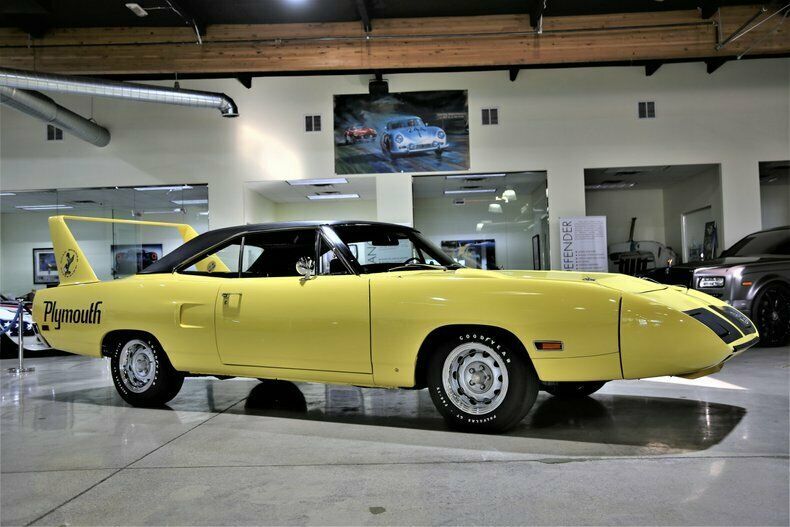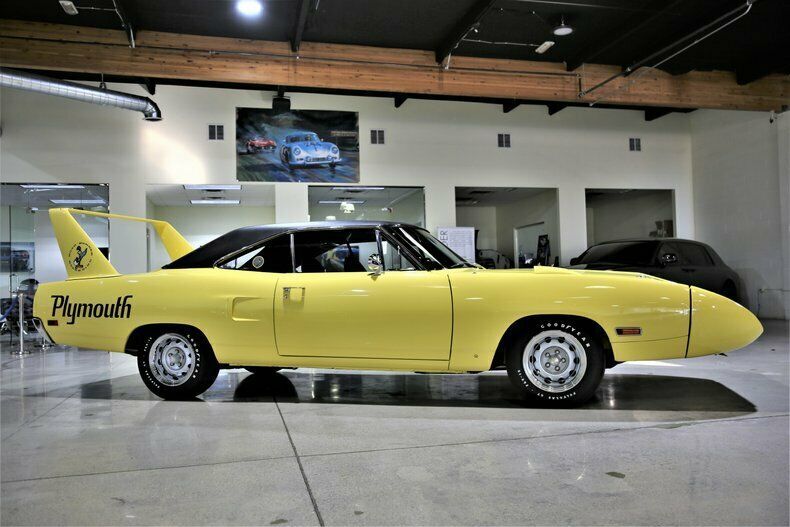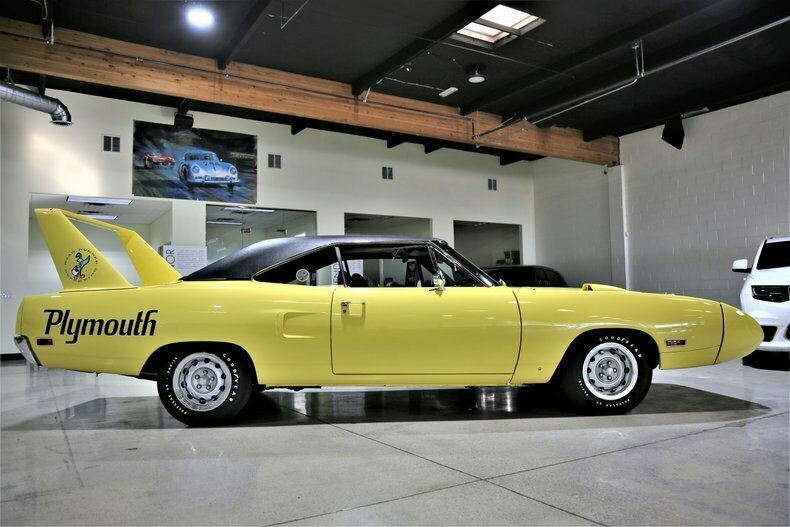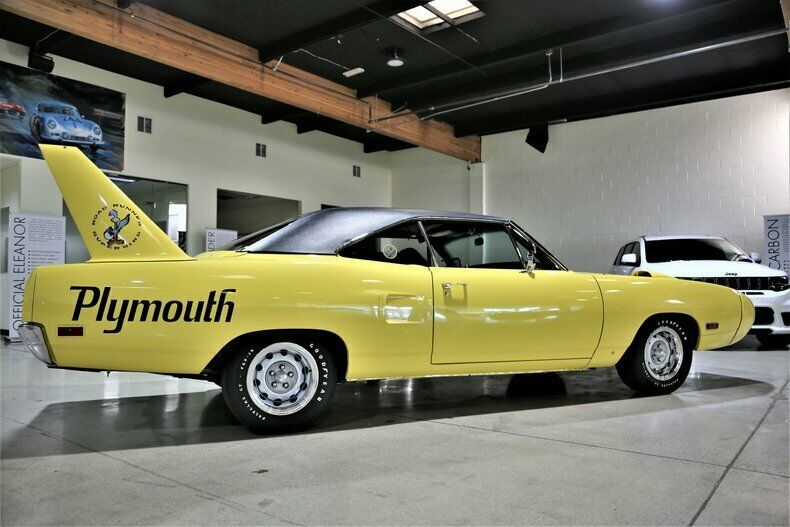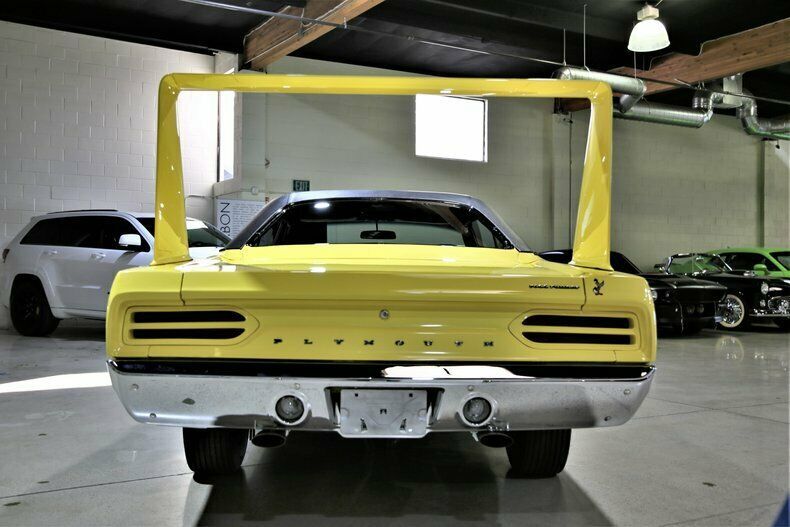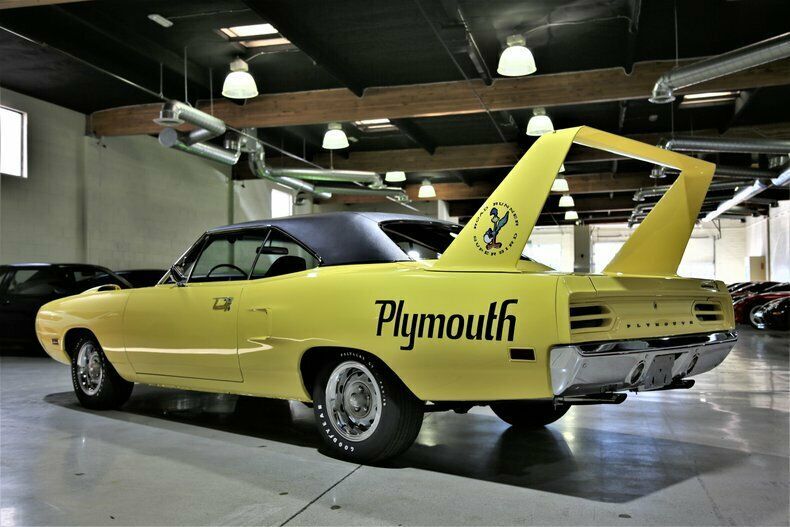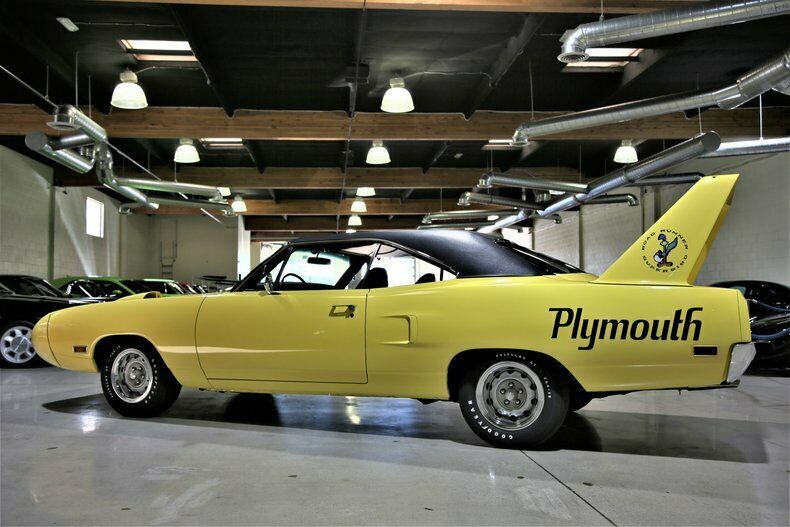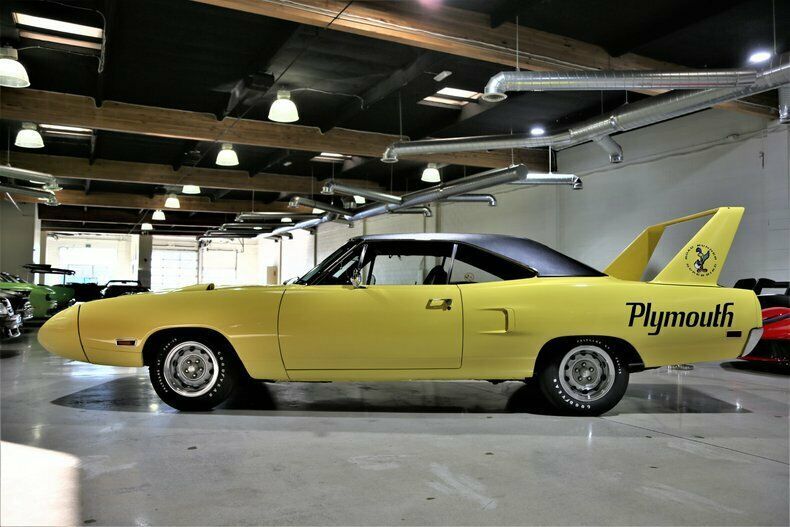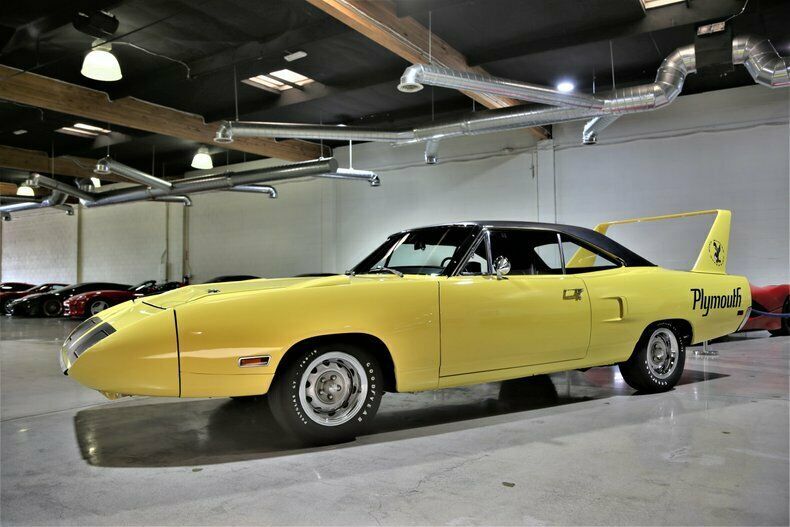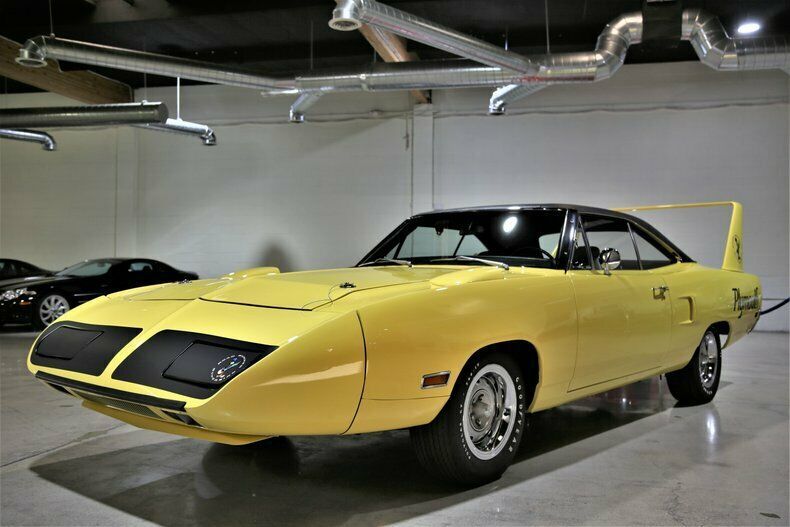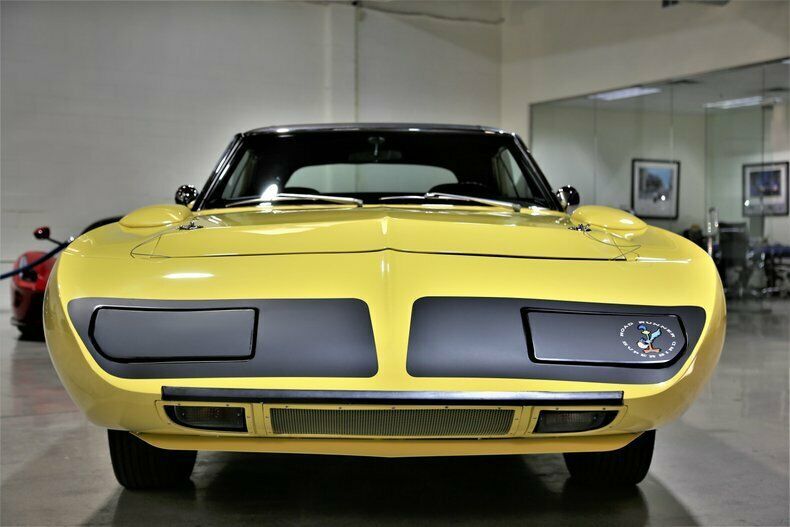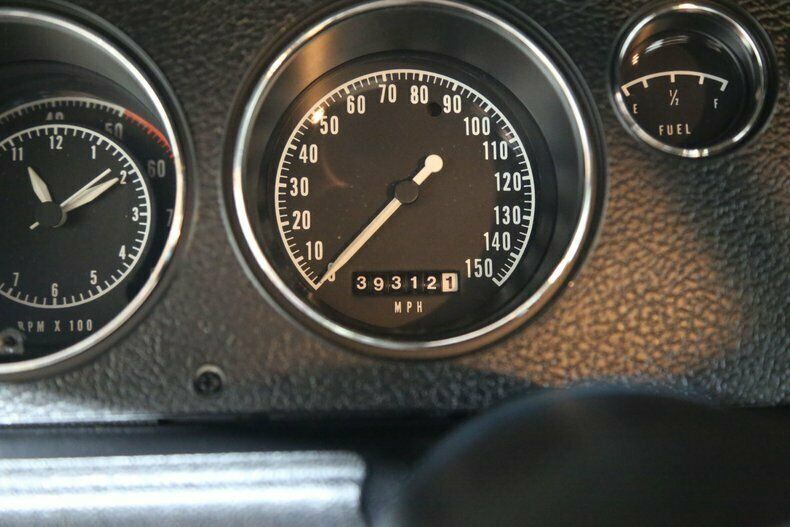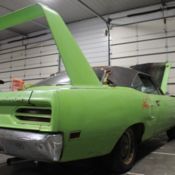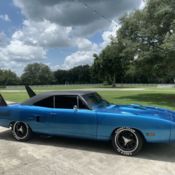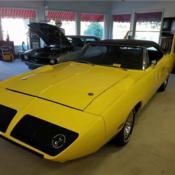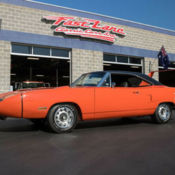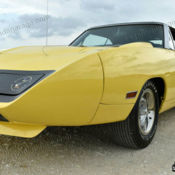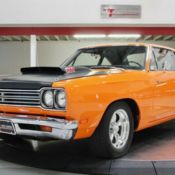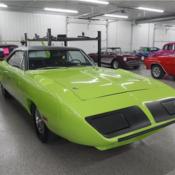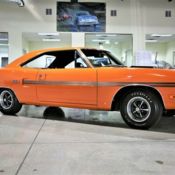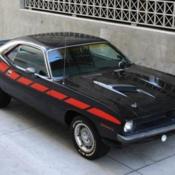1970 Plymouth Superbird 440 SIX-PACK 4-SPEED MANUAL 39312 Miles Yellow Coupe 440
Price: US $179,950.00
Description:
1970 Plymouth Superbird 440 SIX-PACK 4-SPEED MANUAL
Undoubtedly the most recognized Mopar of all the time, The Superbird ruled the track and has been a highly coveted collectible on many Mopar enthusiasts' list. With the exception of the 6-Pack, it has been restored as per its included original broadcast sheet by renowned Mopar Expert Restorations by Julius, the restoration is fully documented and the car is complete with ownership history. A true TWO OWNER Superbird that will please the most discerning collector.Great lease rates and Financing also available on any of our inventory!
Buy Sell Trade Consignments Welcome!
Please email or call 1-818-773-8181
Trim Tag Breakdown:
Lemon Twist (FY1) high impact paint
Special order vinyl roof (V19)
440-4bbl (E86)
4 speed - Manual transmission (D21)
Console (C16)
Bucket seats (P6XA)
Disc brakes (B41)
Power brakes (B51)
Power Steering (S77)
Tinted windshield (G15)
Hood hold-down pins (J45)
Dana 60 Track-Pak (A33) 3.54 (D56) Sure-Grip (D91)
15" Rallye wheels (W21)
Goodyear RWL Poly Glas F60-15 (U84)
Undercoating with hood pad (J55)
Tape Stripe Transverse - Delete (V88)
NOTABLES:
Original Broadcast sheet
Original fender tag
All original sheet metal
Fresh Concourse restoration by Julius
Only test miles since completed
Date code correct engine stroked to 505ci with all forged internals
Six Barrel tribute with 3x2bbl Holley
NOTABLE HISTORY:
Texas car entire life
Documented owner history from day-1 in San Antonio, TX
Original dealership advertisement print
Next owner will be owner #3
About:
The Plymouth Superbird was a highly modified, version of the Plymouth Road Runner with well-known graphics and horn sound. It was the factory's follow up stock car racing design, for the 1970 season, to the Dodge Charger Daytona of 1969, and incorporated many engineering changes and modifications garnered from the Daytona's season in competition.
It has been speculated that a motivating factor in the production of the car was to lure Richard Petty back to Plymouth from Ford. It famously featured a protruding, aerodynamic nosecone, a high-mounted rear wing, and a horn which mimicked the Road Runner cartoon.
Developed specifically for NASCAR racing, the Superbird was Plymouth's follow-on design to the Charger Daytona. The Superbird's smoothed-out body and nosecone were further refined from that of the Daytona, and the street version's retractable headlights added nineteen inches to the Road Runner's original length. The rear wing was mounted on tall vertical struts that put it into less disturbed air thus increasing the efficiency of the downdraft that it placed upon the car's rear axle. For nearly 30 years the mathematic formula used to determine the exact height of the enormous wing was thought to be a highly guarded Chrysler secret. The rear-facing fender scoops were to hide cutouts to allow wheel clearance due to the taller, wider wheels and lowered the height of the vehicle for NASCAR competition. For standard road going Superbirds the covers or "air extractors" were cosmetic.
NASCAR's homologation requirement demanded that vehicles to be raced must be available to the general public and sold through dealerships in specific minimum numbers. For 1970, NASCAR required that 1 car be built for every 2 Dealership locations, in the case of Plymouth, that meant having to build 1,920 Superbirds.
"Superbird" decals were placed on the outside edges of the spoiler vertical struts featuring a picture of the Road Runner cartoon character holding a racing helmet. A smaller version of the decal appears on the driver's side headlight door. Superbirds had three engine options: the 426 Hemi V8 engine producing 425HP at 5000 rpm and 490 lb·ft at 4000 rpm of torque, the 440 Super Commando Six Barrel with 3X2-barrel carburetors producing 390HP and the 375HP 440 Super Commando with a single 4-barrel carburetor. Only 135 models were fitted with the 426 Hemi. As the 440 was less expensive to produce, the "street" version of the 426 Hemi engine used in competition was homologated by producing the minimum number required.
On the street, the nose cone and wing were very distinctive, but the aerodynamic improvements hardly made a difference there or on the drag strip. In fact, the 1970 Road Runner was actually quicker in the quarter mile and standard acceleration tests due to the increased weight produced by the Superbird's nose and wing. Only at speeds in excess of 60 mph did the modifications begin to show any benefit
Production figure generally accepted is 1,935 SuperBirds built and shipped to United States dealers. The engine option is believed to be 135 Hemi cars,716 440ci. cars and 1,084 440ci. 4bbl. cars. It is estimated that about 1,000 SuperBirds exist today.
The Superbird's styling proved to be extreme for 1970's tastes and many of the 1,920 examples built sat unsold on the back lots of dealerships as late as 1972. Some were converted into 1970 Road Runners to move them off the sales lot.
Vehicle Details:
- Condition: Used
- Make: Plymouth
- Model: Superbird
- SubModel: 440 SIX-PACK 4-SPEED MANUAL
- Type: Coupe
- Trim: 440 SIX-PACK 4-SPEED MANUAL
- Year: 1970
- Mileage: 39312
- VIN: RM23U0A170221
- Color: Yellow
- Engine size: 440 Six Pack
- Power options: --
- Fuel: Gasoline
- Transmission: Manual
- Drive type: --
- Interior color: Black
- Options: --
- Vehicle Title: -- Want to buy? Contact seller!
